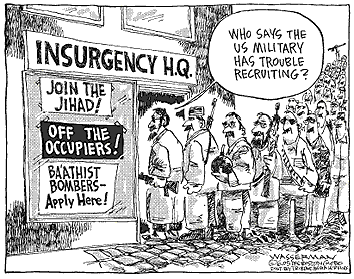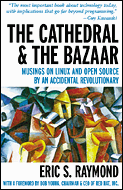 Remember Johnny Carson as "Carnac the Magnificent" where he played a psychic who gave a punchline to a joke before revealing the corny setup. He'd hold up an envelope, then using his mystical powers provide the answer. Finally, he'd open the letter and read the question.
Remember Johnny Carson as "Carnac the Magnificent" where he played a psychic who gave a punchline to a joke before revealing the corny setup. He'd hold up an envelope, then using his mystical powers provide the answer. Finally, he'd open the letter and read the question.
Our answer is: "Usability... Usability... Usability..."
The question is: "Name the three most important factors when considering software."
Okay, c'mon, it's just a stupid take-off on the old joke about, the answer is: "Location... Location... Location..."
and the question is: "Name the three most important factors when considering real estate."
 Jacob Nielson, along with his pal, Don Norman, make for an interesting pair of cyber dudes. Their firm is creatively called the Nielsen Norman Group
Jacob Nielson, along with his pal, Don Norman, make for an interesting pair of cyber dudes. Their firm is creatively called the Nielsen Norman Group
Nielson, who speaks perfect English, but with a slight hint of a Scandinavian accent, is an unabashed self-promoter of all things usability-related. He personally likes to be referred to as "the guru of Web page usability" or the "Web's usablility czar". He publishes a website called useit.com and a usability newsletter called Jakob Neilson's Alertbox.
 Don Norman is your consummate academic practitioner thinker. My memories of Don go back to my days as an aspiring young cognitive psychologist specializing in speech perception minoring in artificial intelligence. Those were wonderfully heady days, but as a struggling, just-married graduate student, money was always in short supply. In my first year as a grad student at Indiana University, my Ph.D. advisor, David Pisoni, was himself just a first-year rookie professor, the ink still fresh on his own doctoral diploma from the University of Michigan up in Ann Arbor. Long story, short, Pisoni got me this paying gig to write the test questions for Don Norman's book -- the first textbook ever written on the topic of "Cognitive Psychology".
Don Norman is your consummate academic practitioner thinker. My memories of Don go back to my days as an aspiring young cognitive psychologist specializing in speech perception minoring in artificial intelligence. Those were wonderfully heady days, but as a struggling, just-married graduate student, money was always in short supply. In my first year as a grad student at Indiana University, my Ph.D. advisor, David Pisoni, was himself just a first-year rookie professor, the ink still fresh on his own doctoral diploma from the University of Michigan up in Ann Arbor. Long story, short, Pisoni got me this paying gig to write the test questions for Don Norman's book -- the first textbook ever written on the topic of "Cognitive Psychology".
Disappointingly, many years later, I finally get the chance to meet Dr. Norman in person. We are both attending a conference in Camden, Maine called "PopTech!". Turns out, I learn these many years later, that while I may have gotten paid for writing the textbook's questions, the author, himself, hated my work. Good thing I high-tailed it out of cognitive psychology and into computer science.
PopTech! was started by Bob Metcalfe (inventor of the Ethernet), John Sculley (former head of Pepsi and Apple -- best known as the person who fired Steve Jobs -- who had hired Scully in the first place), Tom DeMarco (highly-respected author, especially well-known for his books on software project management and information system design), among others. Offers a great, eclectic, annual technology program -- held in the Camden Opera House every October -- a delightful time of the year to visit a delightful coastal gem of a town down east in Maine -- just south of Acadia National Park.

Usability: Empiricism or Ideology?
The June 27, 2005 edition of Jakob Neilson's Alertbox provides some wonderful insights about the job of usability. Below are some [heavily] edited excerpts:The economist Arnold Kling summarizes long-term economic growth using a somewhat peculiar metric: flour bags.When you measure how many bags of flour you can buy for a day's wages, the average worker today generates 430 times the value of a worker in the year 1500.
Kling uses bags of flour to compare productivity because it's one of the few things that has been produced continuously and provides the same benefit today as it did in past centuries.
Ultimately, Kling's point is that economy is a learning mechanism. This huge increase in wealth resulted from a gradual accumulation of learning.
We figured out how to do things faster, cheaper, and more efficiently one improvement at a time.
Knowledge doesn't ebb and flow. It stacks on top of itself.
Improvements build on each other to create ever-increasing productivity gains.
Learning advances are generated in two ways:- in the scientific method, you think up hypotheses and perform experiments to falsify them
If enough studies fail to falsify a hypothesis, then we start to believe it.
- in Darwinism, multiple entrepreneurs bet in parallel on their ability to satisfy a customer's need.
Most companies go out-of-business because the economy's "invisible hand" rejects their proposals.
Basically, both of the above approaches are essentially the same:- you propose a solution
- then you see if it works
Usability Derives Value from Reality
Usability methods such as field studies and competitive analyses help in the discovery of principles that can be used as a guide for building effective user interfaces that real people can comprehend and understand. Unfortunately, using usability to explain human behavior in complex systems under strongly context-dependent circumstances, is a less than exact science. It's not like, say, making predictions using physics. On the other hand, if some aspect of a user interface causes problems for many users in many different environments, it's probably a safe bet to not use it.
Usability as Ideology
- right of empowerment -- users are in control of outcomes
- right of simplicity
- respect for people's time
Click here to read Nielson's June 27, 2005, Alertbox.
In my company, Flashmap Systems, we are true believers in Neilson's usability ideology.
We are extremely proud of the user interfaces our products provide: Everyone should understand that: FOR USERs, the INTERFACE IS THE SYSTEM
In Flashmap's case, our products'
usability target is the
occasional, sporadic, intermittent user. We strive for a user interface that is
smart and
fun (sort of like
my blog is supposed to be
smart and
funny).


























 A few years back,
A few years back, 

 Site Feed
Site Feed
